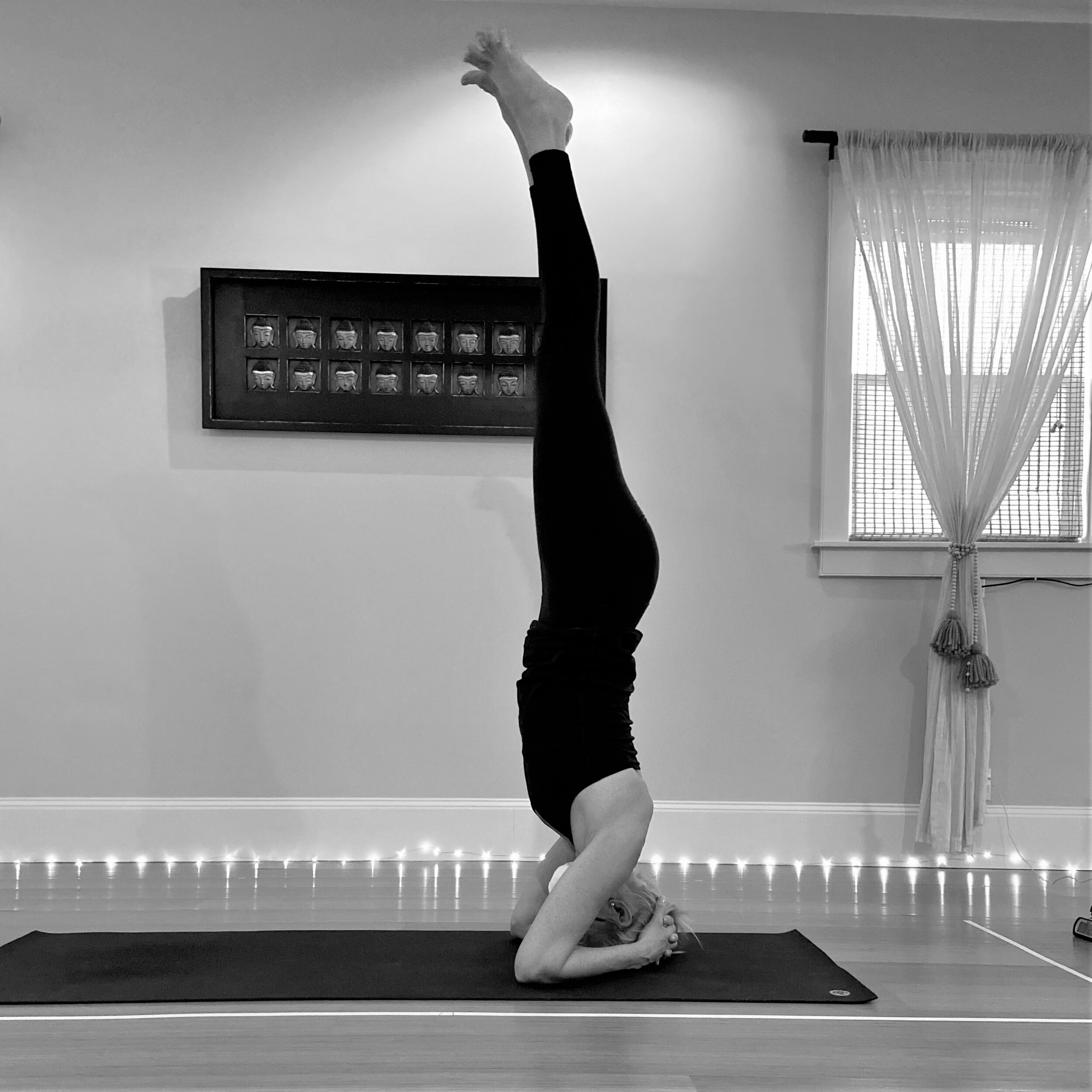Sirsasana (Headstand)
Sirsasana
(Headstand)
Sirsasana has been called The King of Asanas. It tends to be the first inversion that most students learn as it has one of the most stable foundations for flipping ourselves upside down. This fantastic pose shifts our perspective so we can come out physically and mentally refreshed.
Steps:
Place your yoga mat alongside a wall. If you have a thin mat, fold it over for more cushioning. Get onto all fours and face the wall.
Come down onto your forearms and interlace your fingers all the way up to the webbing. Your knuckles should be about a half-inch from the wall; your elbows should be no wider than your shoulders.
Place the crown of your head on the ground, and cup your hands around the back of your head. Tuck your toes and lift your knees off the ground so that your pelvis is elevated and legs are as straight as possible (slight bend in the knees is OK).
Walk your feet in until your shoulders are directly over the elbows. Then, lift your shoulders away from the floor and create length in your neck. Then, walk your feet in a bit farther until your shoulders are slightly beyond your elbows.
Without moving your head, bend one knee and engage your abs to pull it into your chest so that your heel goes to your sitz bones. Repeat with the other knee. Point your feet, and rest your pelvis against the wall. From here, slowly extend one leg up to the wall. Repeat with the other leg. Your heels are on the wall, feet are flexed. If you feel stable, pull your heels and hips away from the wall. Hold this position for 5 breaths.
Then, reverse the move by bending your knees and curling them back into your chest one at a time. Rest in child's pose.
As you become stronger in your headstands, you can move several inches from the wall, and then eventually, try them without a wall at all.


